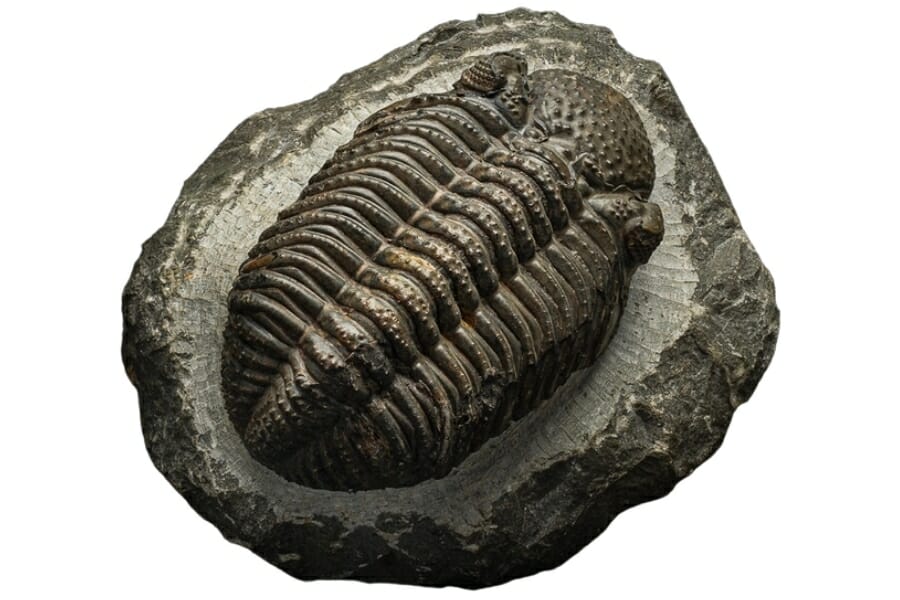With its wide variety of ancient life forms, Pennsylvania is a goldmine for fossil enthusiasts. But finding Pennsylvania fossils isn’t always easy. Without the right information, you might spend hours looking for it but still come up empty-handed.
Don’t worry, though, because there are several fossil-bearing places here, such as the Beltzville State Park, Montour Preserve, and St. Clair. With our guidance, a keen eye, and a bit of patience, you might uncover relics from the past in these locations.
We’ll also share with you the different rare and common Pennsylvania fossils, so you can prepare yourself for what you might find here.
Get ready to explore and uncover the amazing stories that the fossils of Pennsylvania have to tell!
The Fossils Of Pennsylvania You Can Find
With its vast lands, Pennsylvania has many great rockhounding sites for you to visit and explore. But if you’re wondering where you can find fossils here, there are specific spots where they hide.
Before we discuss these places, let’s first quickly run through the different common and rare Pennsylvania fossils:
- The extensive local experience and understanding of our team
- Input from multiple local fossil hunters and fossil groups
- The accessibility of the various locations
- Safety and potential hazards when collecting
- Private and public locations
- A desire to include locations for both experienced fossil lovers and those who are just starting out
Using these weights we think we’ve put together the best list out there for those who love finding great new fossils for our collections!
Common Pennsylvania Fossils
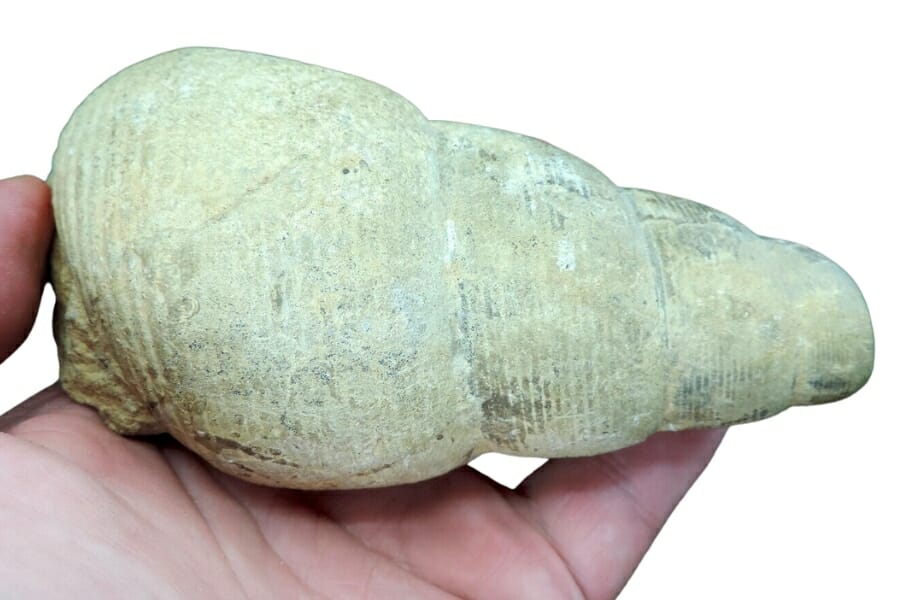
It would help you a lot in your search if you get yourself familiar with the common Pennsylvania fossils, such as the following:
- Crinoids
- Corals
- Trilobites
- Gastropods
- Shark teeth
- Brachiopods
- Fern
Pennsylvania State Fossil – Phacops rana
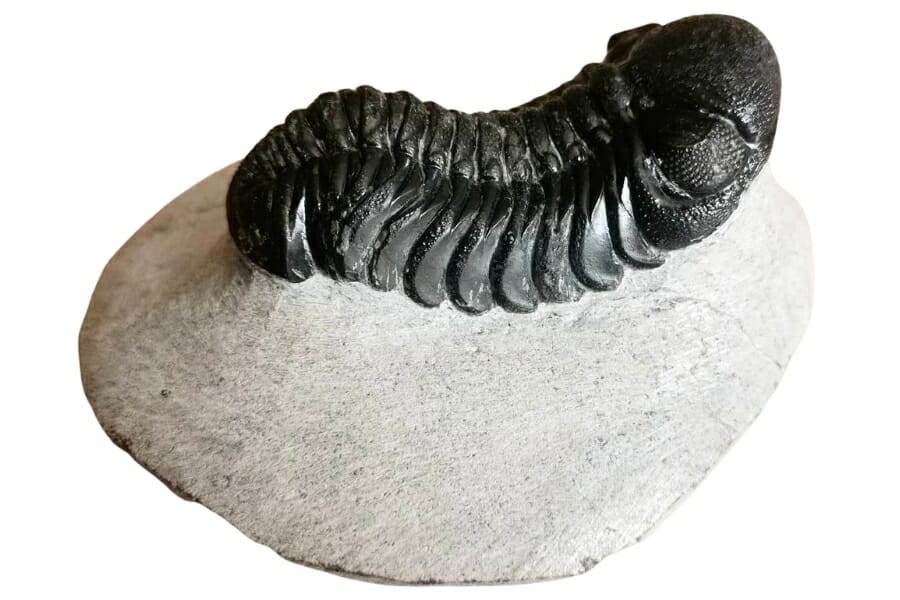
Imagine a creature with a rounded body, a tough outer shell, and lots of tiny legs scuttling along the ocean floor— that’s the Phacops rana for you! It’s a type of trilobite that lived hundreds of millions of years ago.
Phacops rana used to live in the ancient seas that once covered our state. What makes it unique is its big, bug-like eyes. These eyes had many lenses, which probably helped them see in the murky waters.
Interestingly, Phacops rana had a special way of protecting itself. When threatened, it could curl up into a tight ball to protect its soft underbelly. This defensive move is called “enrollment,” and it’s a sign that the ocean floors back then were full of action and danger.
Rare Pennsylvania Fossils
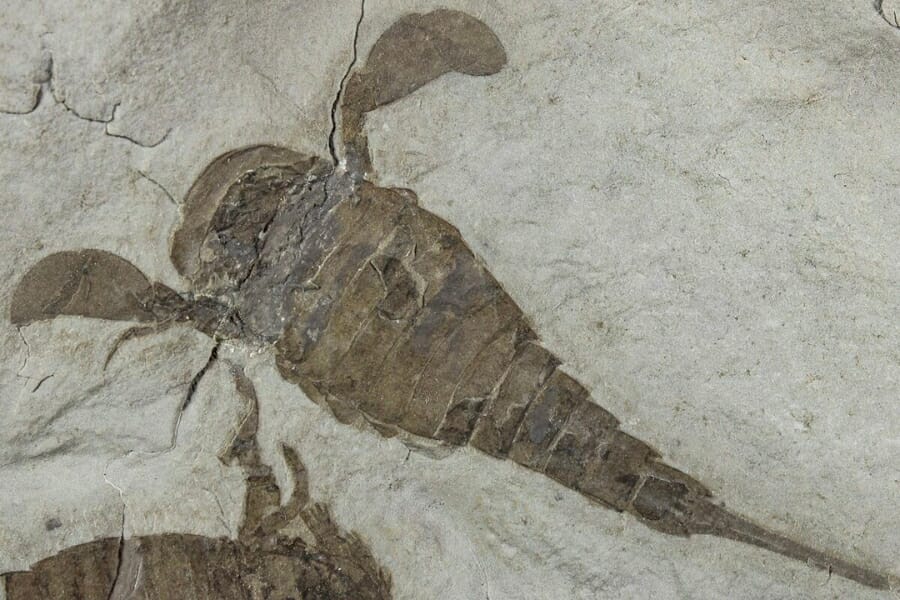
Aside from common finds, there are also a handful of valuable rare Pennsylvania fossils. Below are some of the ones you’ll find especially on our top-recommended sites:
- Palaelophacmaea
- Eurypterid
- Pseudoestheria
- Tetrapods
- Hynerpeton
- Hyneria
The Best Places To Find Fossils In Pennsylvania
We are lucky to have plenty of great places to find fossils in Florida. We’ve selected the five best ones to share more about with you. We’ve discussed what you can expect to find in these places and how you can reach it, among other details you’ll need.
Always Confirm Access and Collection Rules!
Before heading out to any of the locations on our list you need to confirm access requirements and collection rules for both public and private locations directly with the location. We haven’t personally verified every location and the access requirements and collection rules often change without notice.
Many of the locations we mention will not allow collecting but are still great places for those who love to find beautiful rocks and minerals in the wild without keeping them. We also can’t guarantee you will find anything in these locations since they are constantly changing.
Always get updated information directly from the source ahead of time to ensure responsible rockhounding. If you want even more current options it’s always a good idea to contact local rock and mineral clubs and groups
Montour Preserve
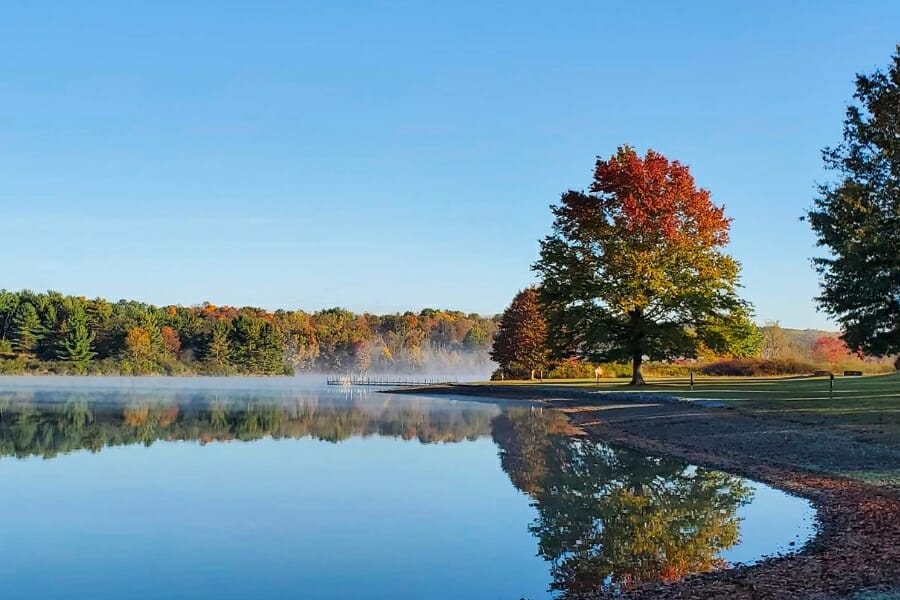
Montour Preserve isn’t just a treat for the eyes, but also for curious minds with a passion for fossils. It has tranquil lakes and nature-filled walking trails that stretch over a large area.
One of the most exciting things about this preserve is its famous fossil pit. It’s known for its rich layers of rock filled with remnants of marine creatures from over 300 million years ago.
From ancient shells to fragments of plants, the treasures you can uncover are truly remarkable. And the best part? The preserve encourages you to gently dig and take home fossils you’ll find.
Accessibility is another great thing about Montour Preserve. Located near the town of Danville, it’s easy to get to by car. The pathways are well-maintained, making it easy for families, including kids and even those not used to hiking, to explore it.
Where and what fossils to find in Montour Preserve
Montour Preserve is endowed with pelecypods, cephalopods, brachiopods, bryozoans, crinoids, gastropods, corals, and trilobites, among other fossils.
If you want REAL results finding incredible rocks and minerals you need one of these 👇👇👇
Finding the coolest rocks in isn’t luck, it's knowing what to look for. Thousands of your fellow rock hunters are already carrying Rock Chasing field guides. Maybe it's time you joined the community.
Lightweight, mud-proof, and packed with clear photos, it’s become the go-to tool for anyone interested discovering what’s hidden under our red dirt and what they've already found.
Join them, and make your next rockhounding trip actually pay off.
What makes it different:
- 📍 Find and identify 140 incredible crystals, rocks, gemstones, minerals, and geodes across the USA
- 🚙 Field-tested across America's rivers, ranchlands, mountains, and roadcuts
- 📘 Heavy duty laminated pages resist dust, sweat, and water
- 🧠 Zero fluff — just clear visuals and straight-to-the-point info
- ⭐ Rated 4.8★ by real collectors who actually use it in the field
Red Hill Devonian Fossil Site
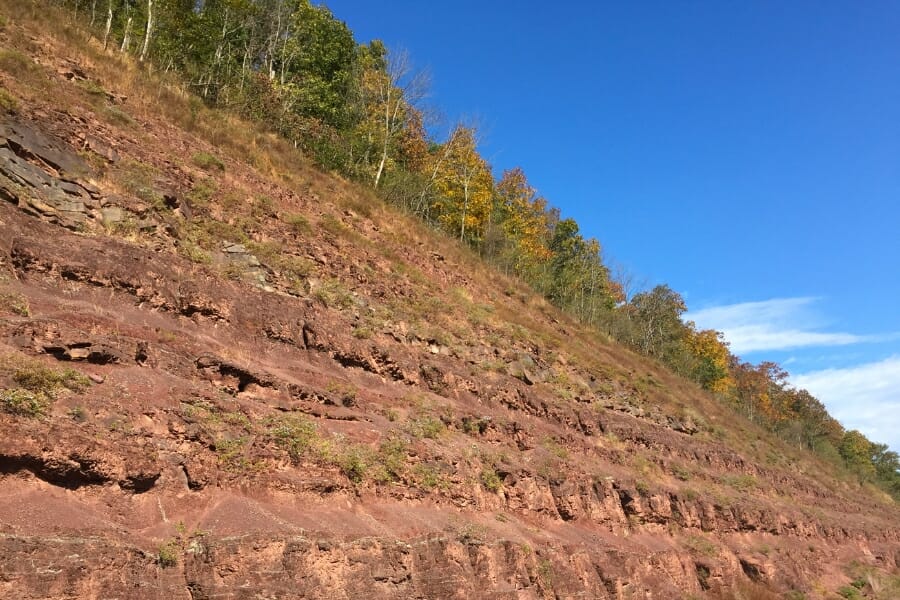
Red Hill Devonian Fossil Site is from the Devonian period, which means it’s over 360 million years old. That’s a time when fish were the kings of the water, and the first plants began to stretch towards the sky on land!
Unlike many other fossil-hunting spots in Pennsylvania where you might find marine fossils, Red Hill is special because it showcases evidence of early life on land.
Here, you can discover ancient fish bones, fragments of the world’s first trees, and even traces of four-legged creatures that once roamed this ancient landscape.
Red Hill is located near the town of Renovo, and though it might seem tucked away, the journey is worth it. There are signs to guide you, and the paths are well-trodden, thanks to many curious minds that have ventured here before.
Where and what fossils to find in Red Hill Devonian Fossil Site
When you explore here, you have the chance to find fossils of tetrapods, sharks, ray-fins, lobe-fins, insects, and a variety of vascular plants.
The star attraction here, though, are the fossils of Hyneria, a giant, carnivorous lobe-fin, and Hynerpeton, a four-legged creeping critter.
Swatara State Park
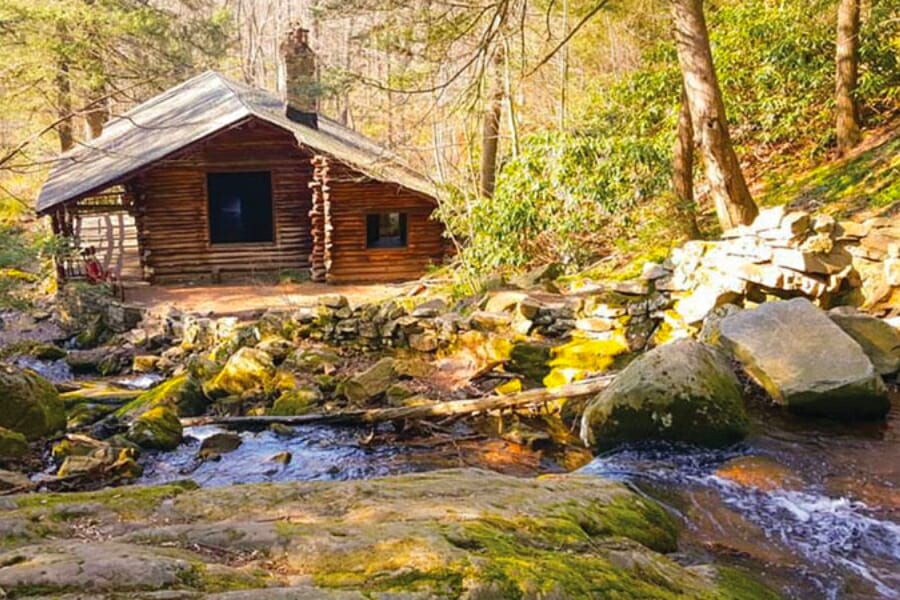
Imagine lush green forests, gentle streams, and trails that weave through the heart of nature— that is what Swatara State Park looks like. But there’s more to it than just its beauty.
The park is well-known for its fossil-rich areas. Thanks to ancient seas that once covered this region, the rocks here have captured moments from millions of years ago. As you stroll through the park, keep your eyes peeled for different marine fossils.
Reaching Swatara State Park is a breeze as it’s located in the ridge and valley region of Central Pennsylvania. It’s easily accessible from major highways, and there’s clear signage to guide you.
Once you’re here, there are numerous trails suited for all ages and abilities. There are also specific areas where you can safely and responsibly search for fossils.
Where and what fossils to find in Swatara State Park
If you explore here, you can find fragments of Cryptolithus, Cryptolithus trilobites, cephalons, flexicalymene, brachiopods, nautiloids, and starfish fossils.
Beltzville State Park
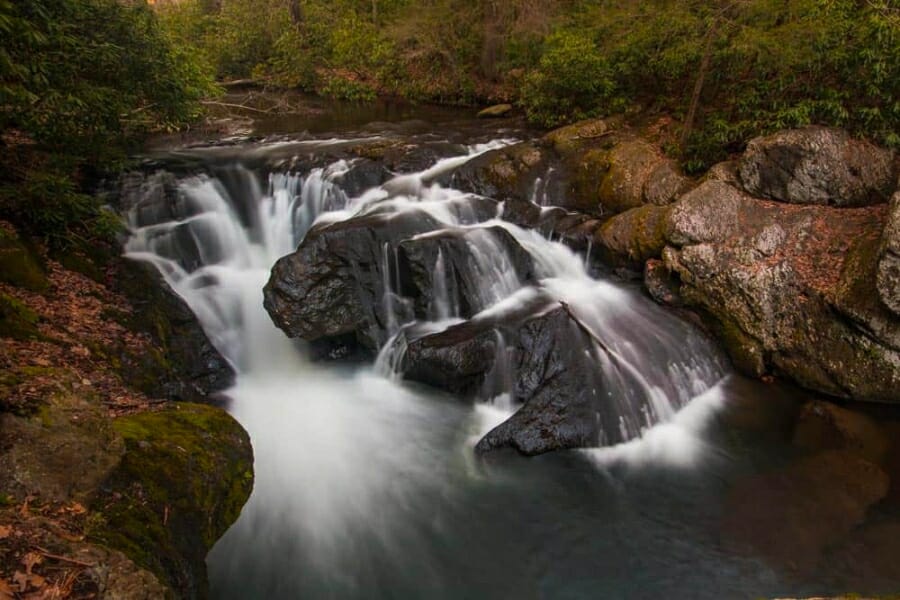
Stretching over vast acres, Beltzville State Park is a canvas of sparkling waters, dense woods, and picturesque landscapes. Beneath its scenic beauty also lies a treasure trove of ancient fossils!
With its rocky outcrops, this park is a window to a time when ancient seas teemed with life. These seas left behind layers of rock, and if you look closely, you might spot fossils of marine animals.
Getting to Beltzville State Park is a piece of cake. It’s well-connected by roads and well-signposted, making it a popular spot, not just for fossil hunters, but also for families and outdoor lovers.
Where and what fossils to find in Beltzville State Park
When you explore here, you’ll find impressions of trilobites, crinoids, brachiopods, bryozoa, and corals. You can also find complete Phacops rana, Pennsylvania’s official state fossil, at Beltzville State Park.
St. Clair
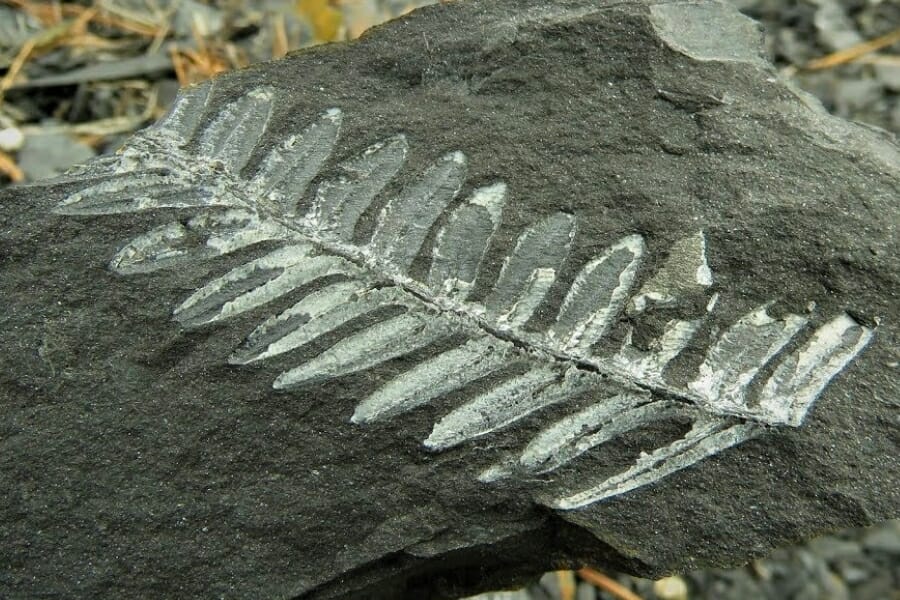
The magic of St. Clair lies in its white fossils on pitch-black shale. And the fascinating thing about them is that they are not dinosaurs or ancient marine life but plants!
When these ancient plants died, they left behind their imprints on the dark shale, creating stark white silhouettes. These fossils are not only beautiful but also help us understand the lush vegetation that once covered our state.
If you want to go here, St. Clair is accessible by road and is not too far from major towns. Once you get here, you’ll find spots specifically known for fossil hunting. The trails leading to these fossil-rich spots are well-trodden and suitable for both beginners and experienced rockhounds.
Where and what fossils to find in St. Clair
You can find interesting fern fossils in St. Clair. What’s unique about them is that during fossilization, pyrite got into the mix. Through time, this pyrite was replaced by pyrophyllite, which gives the fern fossils their white color.
Other Top Places To Find Pennsylvania Fossils By Region
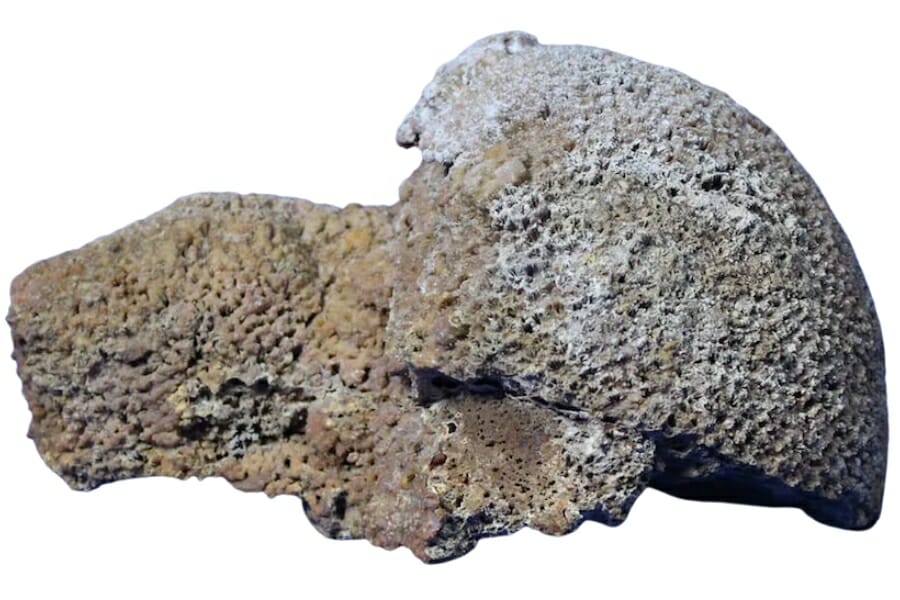
If you want to know about the other great places to find fossils in Pennsylvania, we’ve created a list below that outlines them and the different finds you can encounter in each of them:
| Location | Fossils |
| Conewago Creek in Adams County | Phytosaur teeth, Fish scales |
| McKeesport area quarry in Allegheny County | Marine invertebrates |
| Soho Street Quarry in Allegheny County | Diploceraspis |
| Quarry at Kellersburg area in Armstrong County | Marine invertebrates |
| Limestone outcrop in Parker area, Armstrong County | Brachiopods, Crinoid columnals, Corals |
| Junction opposite Ambridge-Woodlawn bridge in Beaver County | Invertebrates, Vertebrates, Shark teeth |
| Along the west side of Knobbly Mountain in Sandstones, Bedford County | Spirifer, Merista, Streptorhynchus, Platystoma, Megambonia, Platyceras |
| Furnace Hill Site in Berks County | Reptile footprints |
| Stripped area of US-220 in Hollidaysburg, Blair County | Brachiopods, Ostracods, Phyla |
| Gulf Brook Area in Bradford County | Bothriolepis, Holoptychius, Pterichthys |
| Along PA53 to Bellefonte in Centre County | Pelmatazoa, Algae, Gastropods, Orthoceras, Trilobites, Brachiopods, Palaelophacmaea |
| Black Rock Tunnel and Buckwalter’s Farm in Chester County | Dinosaur bones, Reptile bones, Amphibian bones, Turseodus |
| Strip mine in Clearfield County | Eurypterid |
| Quarry opposite Lime Ridge Station in Columbia County | Atrypa, Orthis, Cladopora, Dalmanites, Favosites, Zaphrentis, Rhynchonella, Strophomena |
| Hillside near Liberty Street in Meadville, Crawford County | Trace fossils, Brachiopods, Mollusks |
| Rockville Quarry in Dauphin County | Coral, Bryozoa, Brachiopods, Cephalopods, Crinoids, Trilobites, Trace fossils |
| Elk Creek in Erie County | Brachiopod molds, Mollusk molds, Ichnofossils |
| Limestone cliff on Delaware River in Fayette County | Stromatopora, Pentamerus |
| Southeast slope of Conococheague Mountain in Franklin County | Brachiopods, Bivalves, Plant fossils |
| Cliffs in Pennsylvanian Conemaugh Formation in Indiana County | Gastropods, Brachiopods |
| Area quarries south of Newcastle in Lawrence County | Brachiopods, Crinoids |
| Road cuts north of Pleasant Hill in Lebanon County | Pseudoestheria |
| Abandoned copper mine in Calvert area in Lycoming County | Flora |
| Prospect pit in Lairdsville area in Lycoming County | Flora |
| Quarries and roadcuts along valley of Tunungwant Creek in McKean County | Brachiopods, Trace fossils |
| West of McKees Ore Bank in Mifflin County | Avicula, Actinopteria, Beyrichia, Crinoid columnals, Dalmanites, Homalonotus, Lyrodesma, Leptaena |
| River at the base of Dale’s Hill in Northumberland County | Sponges |
| Indian Ladder Falls in Pike County | Brachiopods, Crinoids, Cephalopods, Trilobites |
| Old prospect in Muncy Valley area in Sullivan County | Flora |
| Tunkhannock Creek in Susquehanna County | Holoptychius, Fish beds, Plants, Shells, Bothriolepis, Dipterus |
| Regional exposures along tributaries of Tioga River in Tioga County | Brachiopods, Pelecypods, Crinoids, Bryozoa, Plants |
| Washington Stone Co Quarry in Washington County | Shark, Lungfish, Amphibia |
| Wheatley’s Copper Mines in York County | Clepsysaurus, Eupelor, Palaeoctonus, Rutiodon, Suchoprion, Thecodontosaurus |
Common Questions About Fossil Hunting In Pennsylvania
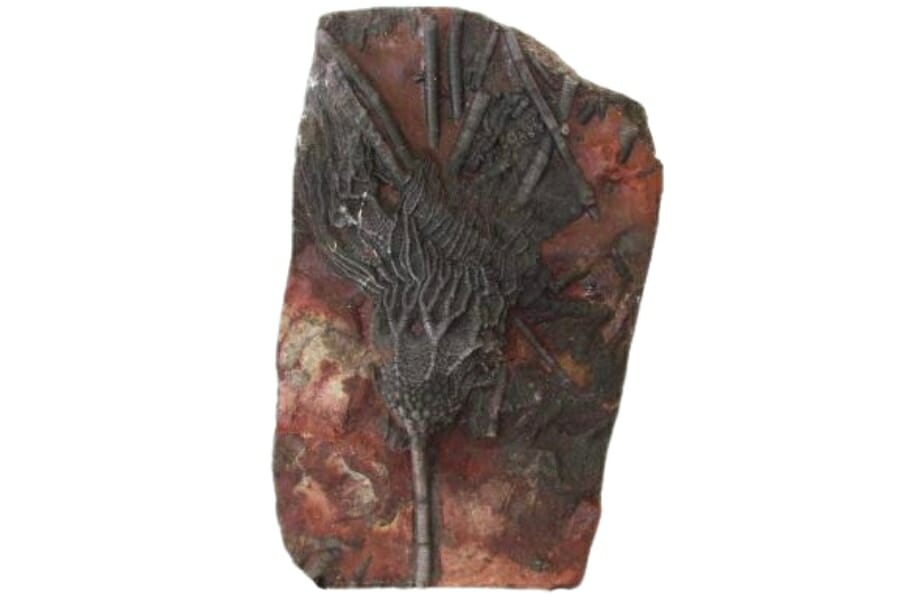
Before we head out here, allow us to answer some of the most common questions when it comes to fossil hunting in New York, in case you have the same queries in mind.
Can you find megalodon teeth or shark teeth in Pennsylvania?
Absolutely! While our state is landlocked now, millions of years ago, parts of it were covered by ancient seas. These seas were home to a variety of marine life, including sharks.
While megalodon primarily existed in warmer ocean waters, it’s not impossible for their teeth or remains to have traveled due to ocean currents or geological processes.
However, finding megalodon teeth in Pennsylvania is extremely rare. More commonly, smaller, ancient shark teeth can be found, especially in areas with marine sedimentary rocks.
Is it illegal to collect fossils in Pennsylvania?
As in many states, fossil collecting laws in Pennsylvania depend on land ownership and specific site regulations. On private land, you need the landowner’s permission to collect fossils. Without permission, it’s trespassing and illegal.
On state-owned lands, like state parks and forests, collecting fossils is generally prohibited without a special permit. There are some public areas, however, where fossil collecting is allowed for personal use only.
To know more about Pennsylvania’s local collecting guidelines, visit the official website of the Pennsylvania Department of Environmental Protection (PADEP) which regulates the activity here.
Can you find dinosaur bones in Pennsylvania?
Finding actual dinosaur bones is quite rare, but not impossible, in Pennsylvania. The rock layers most exposed here are either too old or too young to contain dinosaur remains.
The few Mesozoic deposits in Pennsylvania are primarily from the late Cretaceous period and are not widespread or extensively studied for dinosaur remains. While there have been occasional reports of potential dinosaur footprints, definitive dinosaur bone discoveries are notably rare.
Our Favorite Places To Buy Fossils In Pennsylvania

Another great way to see different common and rare Pennsylvania fossils is to visit our trusted shops. Lucky for you, we have plenty of them!
Below are some of our most recommended ones:
- Bey’s Rock Shop – 615 PA-100, Bechtelsville, PA 19505
- Earth Wind Fire & Ice – 640 Baltimore Pike, Chadds Ford, PA 19317
- Extinctions, Inc. – 1809 Columbia Ave, Lancaster, PA 17603
- Geology Rocks! And Minerals – 5124 Butler St, Pittsburgh, PA 15201
- Rina’s Rocks – 120 S York Rd, Hatboro, PA 19040

